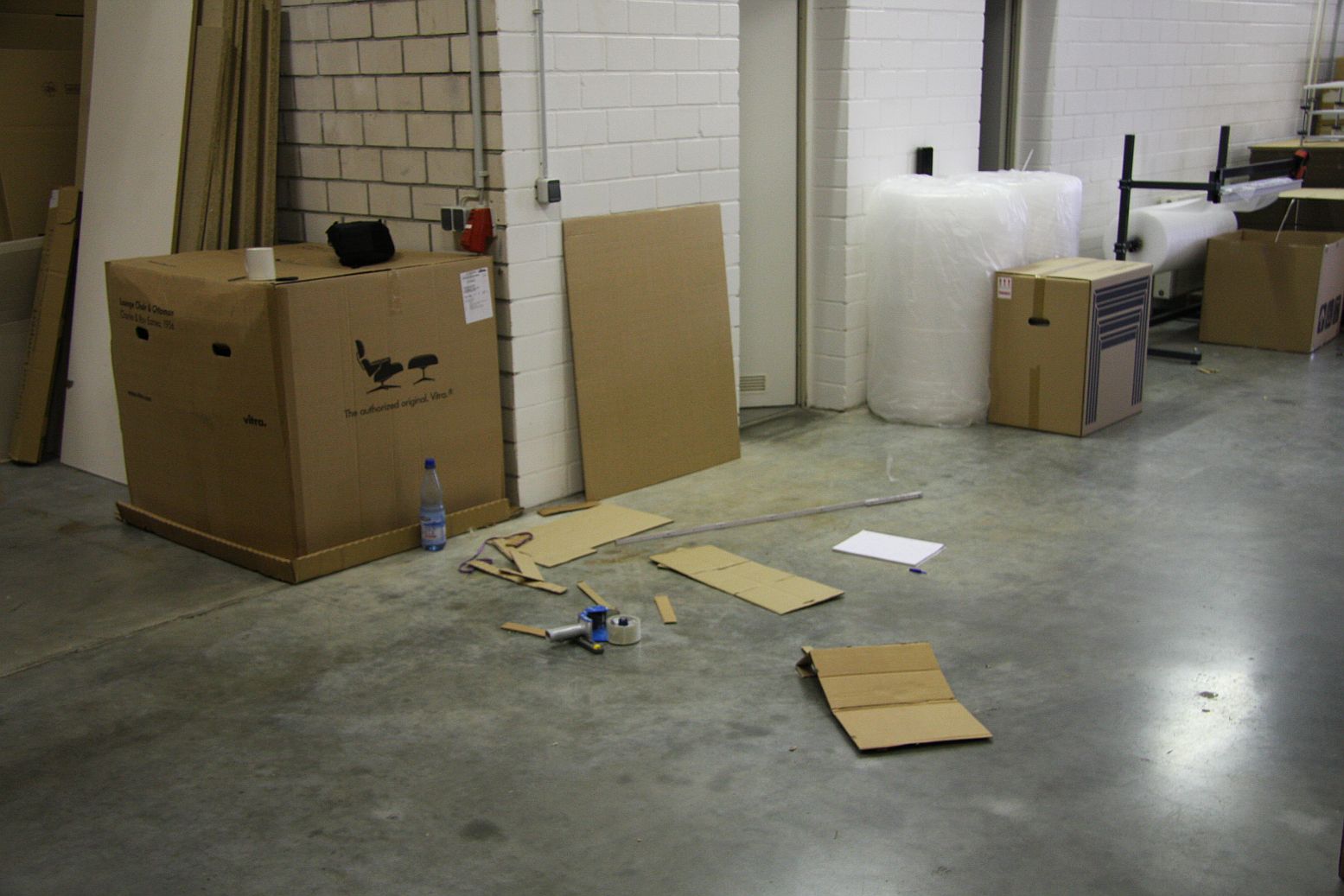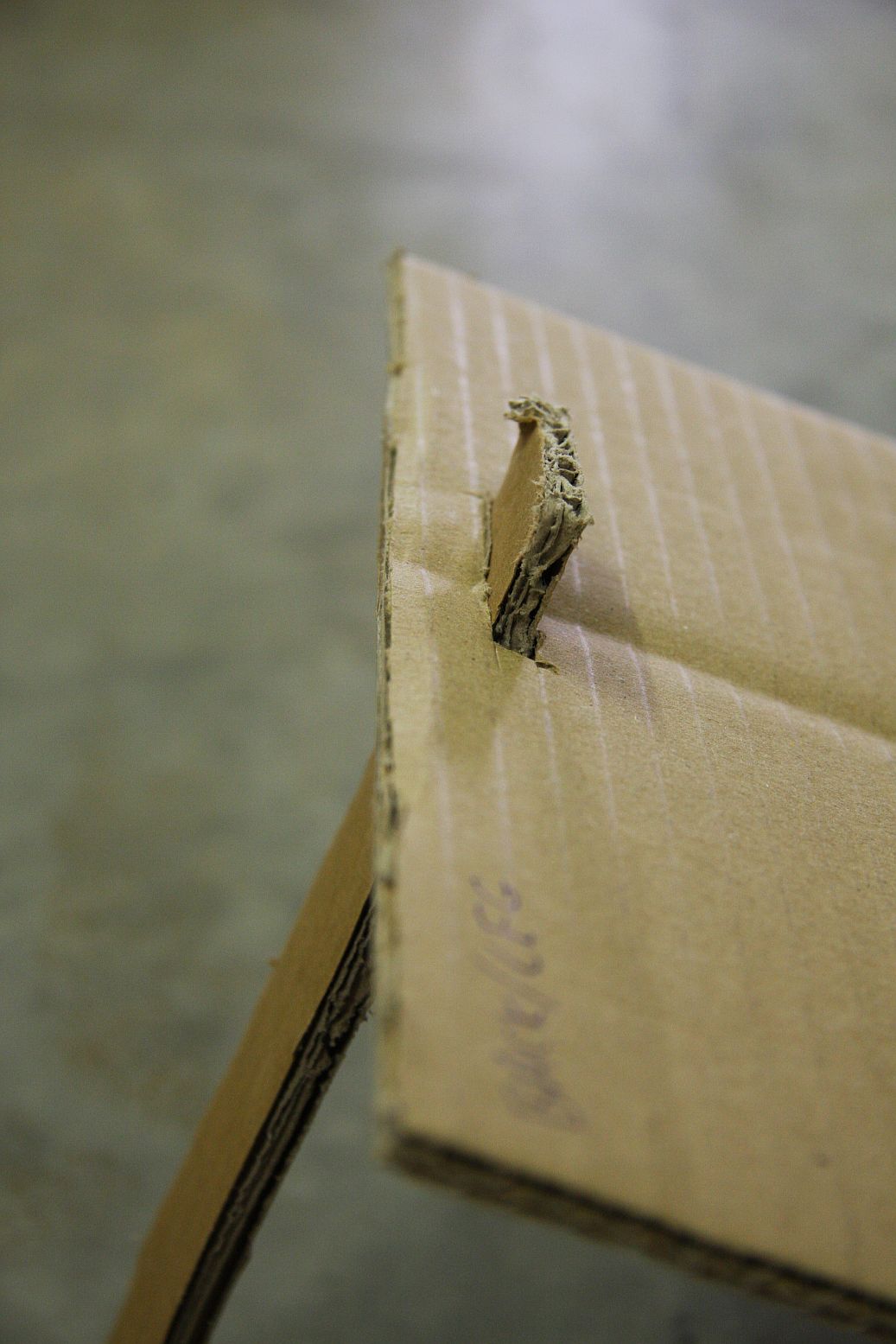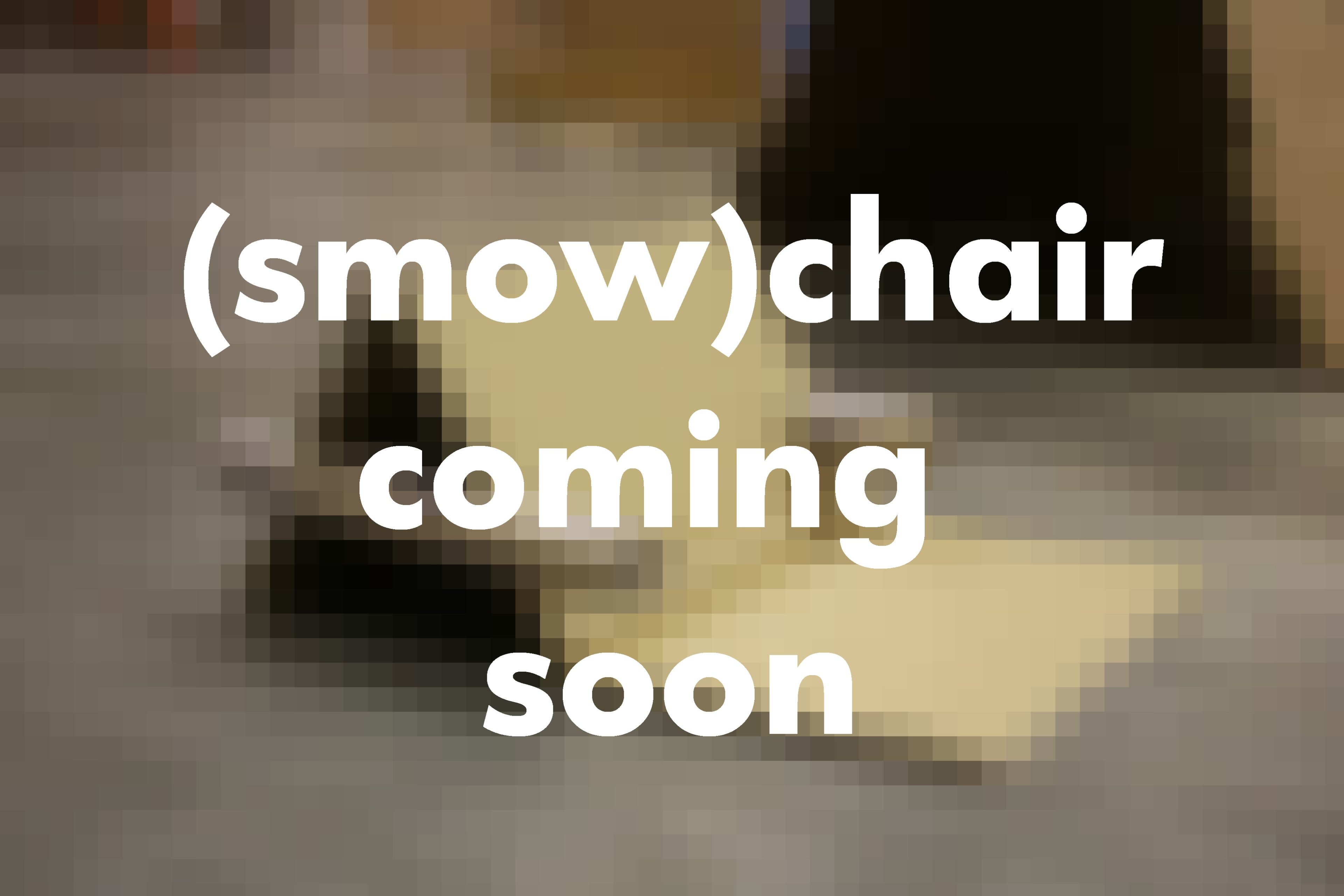
Having decided on our concept, all we had to do was ensure that the structure had enough stability.
And although we knew that stability was going to be a problem, it always is with cardboard, we had seriously underestimated just how difficult it was going to be to incorporate stability into our plan without compromising weight, volume or indeed the very fabric of our concept.
It took about four minutes before our carefully considered sketches were consigned to the bin.
3D reality and 2D vision not being the most closely related beings in the universe.
Initially our plan involved a chair, based upon Maarten Van Severen's MVS Chaise that could be converted between a "normal" sitting chair and a recliner.
Nice idea: just completely misplaced within the context of our larger concept. And so despite the best efforts of the (smow) technical team that part of plan had to be sacrificed.

Shame. But we'll get it next time.
However even with the new plan, we still had a numerous problems. The principle one being realising the concept while maintaining a "reduced" design.
Almost all solutions to the stability problem either adding to the volume of the product or requiring the use of a material other than cardboard.
And so our initial 20 minute model building session quickly developed into a day spent in the smow(warehouse) cutting, folding, cursing, doubting, cutting, crying, cursing and folding again.
The decisive input then came from the (smow) USM Haller battalion.
An ingenious solution that not only solved our principle problem; but also opened a range of further options and so both triggered a wonderful late afternoon revival in our spirits and allowed us to dream sweet dreams yet again.
Now, we don't want to compare our day spent folding and cutting cardboard with Charles and Ray Eames experiments with moulding plywood, Michael Thonet's decades spent perfecting the process for bending wood nor the work undertaken in the Kartell laboratories to develop new plastic materials.
But.
Having spent a day turning a, on paper, relatively simple idea into a real product that fulfills a specific function and meets required standards, we are a little bit better placed to understand the problems real product designers have and the talent required to be successful.
And having spent a day turning a, on paper, relatively simple idea into a real product that fulfills a specific function and meets required standards we also have the (smow)chair.
The delightful and practical (smow)chair.
